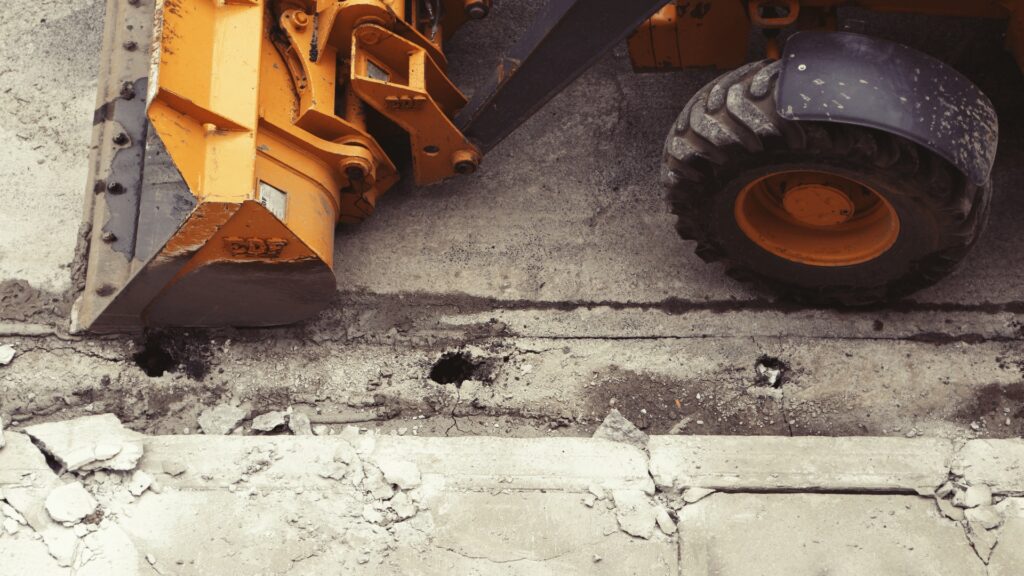With many walkaround check and fleet management solutions focusing solely on commercial vehicles, like vans, coaches, buses and HGVs, it can be difficult for operators with plant machinery and other work equipment to keep track of their inspections and checks associated with regulations such as PUWER and LOLER.
And, if you’re using paper check sheets, with inspection dates marked on a wall planner, and records manually entered into a spreadsheet or filed in a cabinet (that’s if the paper records even make it back to the office every time), actually managing every maintenance issue through to resolution can seem like a near-impossible task.
Introducing a simple mobile app solution for plant machinery checks & inspections
Stream Check isn’t just for vehicle safety and maintenance checks. You can use Stream Check to manage plant and work equipment maintenance too – from construction machines to manufacturing plant and lifting equipment.
Stream Check helps you to stay on top of safety regulations and maintenance work around LOLER (Lifting Operations and Lifting Equipment Regulations) and PUWER (Provision and Use of Work Equipment Regulations), by:
- Adding equipment-specific checks for each piece of plant or machinery, so key aspects of every item will be inspected as required. This varies based on a number of factors, but according to the HSE guidelines: “[what the inspection should cover] will depend on type of work equipment, its use and the conditions to which it is exposed. This should be determined through risk assessment“
- Adding different check types depending on timescales, i.e. a shorter set of essential daily checks and a more in-depth set of weekly or quarterly checks. The HSE guidelines reccomend differnt sets of checks for “quick checks before use, weekly checks, and more extensive examinations, undertaken every few months or longer“. The guidelines also advise that “the frequency of inspection may vary, depending on environmental conditions [and] should be determined through risk assessment, taking account of the manufacturer’s recommendations, industry advice and your own experience“.
- Scheduling the checks not only can you add different checks by equipment type and by frequency, but once you’ve determined the required frequency (via risk-assessment), Stream Check can schedule future checks out over a given timeframe.
- Sending reminders to complete the checks when required, according to the timeframe scheduled.
- Sending notifications to maintenance, managerial or back-office teams when a defect is reported. The HSE guidelines point out that “any deterioration detected and remedied before it results in a health and safety risk“.
- Following defects through to resolution. Not only does the system notify anyone who needs to be made aware of the checks, it also follows that defect through to resolution – documentation can be added to the system, to show that maintenance work has been undertaken and the equipment is safe for use.
- Storing check records for as long as you need the. This is defined in the HSE guidelines as “the result of the inspection should be recorded and this record should be kept at least until the next inspection of that equipment“.
- Securely recording checks, via cloud storage. The guidelines point out that checks “should be held securely and made available upon request“.
Let’s recap why it is important to conduct safety and maintenance checks on plant machinery and equipment covered by regulations like PUWER and LOLER.
PUWER specifically outlines the responsibilities of “people and companies who own, operate or have control over work equipment”, and LOLER of “people and companies who own, operate or have control over lifting equipment”. The regulations primarily relate to the safety and maintenance of that equipment.
That means that PUWER and LOLER apply to business using work and lifting equipment, in any capacity – including where an employee uses equipment owned by them (and not by the organisation) as part of their job role.
PUWER and LOLER regulations are in place to safeguard companies and employees working with machinery and equipment in the workplace. Request a callback to learn how Stream Check can help you to maintain PUWER and LOLER regulations.








